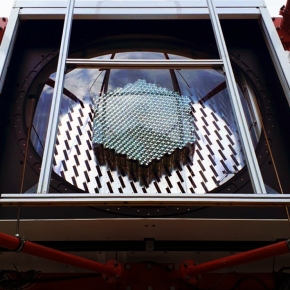CANEVAS : CAmera NEctarcam VAlidation at Paris-Saclay
SCIENTIFIC BACKGROUND:
In the course of the 20th century, the field of astronomy has expanded from visible light to the entire electromagnetic spectrum, from radio waves to the most energetic radiation: gamma rays, produced in cosmic sites where particles are violently accelerated, such as the remnants of supernovae, pulsars or the edges of black holes. The detection of these very high energy gamma rays is now opening a new window - that of very high energy gamma-ray astronomy - on the most extreme phenomena in the Universe, and is delivering remarkable results.
The gamma-ray range starts with photons with energies of the order of 100 keV and extends to 30 TeV, i.e. 3 000 billion times the energy of visible light. The scientific challenges are numerous:
DESCRIPTION OF THE PROJECT:
The aim of the CANEVAS project was to build and validate a prototype NectarCAM camera for the CTA Medium Telescope (MST).
The CTA (Cherenkov Telescope Array) is a new generation of ground-based instrument to explore the sky in very high energy gamma rays. It will cover a wide energy range, from 20 GeV to more than 100 TeV, a range complementary to that covered by the Fermi satellite (100 MeV - 30 GeV). With more than 100 telescopes located in the northern and southern hemispheres, it will make it possible to obtain images of the sky with a sensitivity and angular resolution ten times greater than the observatories currently in operation (HESS, Magic, Veritas).
ACHIEVEMENT:
The prototype NectarCAM camera, CANEVAS, was built, integrated and successfully validated in the prototype MST telescope. Lessons learned from the campaign have led to further minor improvements in the design of NectarCAM. Compared to HESS and Magic, it has :
NectarCAM is now on site (La Palma, Canary Islands).

P2IO's support was essential to make NectarCAM a viable camera for CTA and to obtain TGIR funding for the whole NectarCAM subnetwork.
LabEx P2IO is now linked to a major international instrument for gamma-ray astronomy for the next decades.
